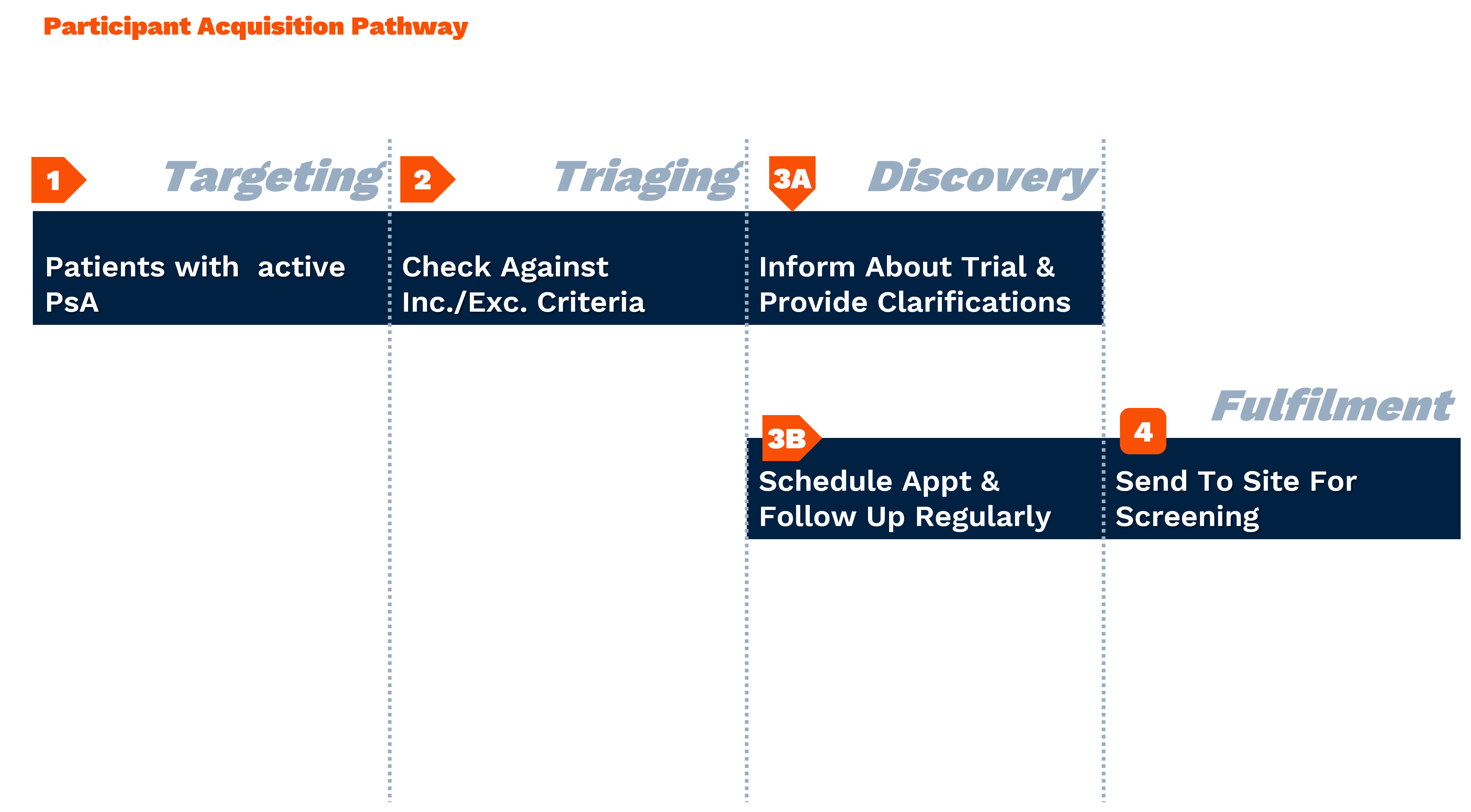Unveiling Hidden Patient Behaviors
Our analysis of the client’s trial recruitment landscape revealed an intriguing insight that immediately caught attention: PsA patients exhibit distinct online research patterns, with significant activity happening through dermatology channels rather than traditional rheumatology pathways. This finding suggests a fundamental shift in how we should approach patient engagement.
Understanding Patient Digital Footprint
The analysis uncovered four distinct types of patient engagement:
Geographic Intelligence
Unique Market Dynamics
The analysis revealed several unexpected challenges:
- Competition with alternative medicine practitioners for online patient attention
- Strong dermatology-focused patient traffic patterns
- Varied treatment curiosity levels across geographic regions
- Local healthcare system nuances affecting patient journeys
Proposed Strategic Approach
Based on these insights, a tailored recruitment strategy emerged:
-
Geographic Focus
- Initial concentration on areas with high dermatology engagement
- Targeted campaigns in regions showing strong treatment curiosity
- Consideration of travel limitations for PsA patients
-
Channel Strategy
- Primary focus on dermatology-related digital channels
- Long-term, low-cost campaign approach
- Multi-language engagement strategy
-
Patient Journey Optimization
- Pre-screening verification of:
- Active PsA diagnosis
- Current treatment with non-biologic DMARDs
- No recent exposure to JAK inhibitors
- Willingness to consider biologic treatments
- Pre-screening verification of:
Looking Forward
This analysis opens new possibilities for:
- Similar autoimmune condition trials
- Studies requiring specific treatment history
- Multi-specialty recruitment approaches
- Cross-therapeutic area applications
The insights from the client’s trial analysis suggest that traditional recruitment models may be missing key patient touchpoints. While these findings need validation through implementation, they offer a promising direction for improving recruitment efficiency in complex autoimmune trials.
Broader Applications
The approach could be particularly valuable for:
- Other rheumatological conditions with similar patient behaviors
- Trials requiring specific treatment history
- Studies targeting conditions with multiple specialist touchpoints
- Global trials requiring consistent recruitment approaches
The unique insights gained from analyzing PsA patient behavior patterns suggest that traditional recruitment challenges can be addressed through a more nuanced understanding of patient journeys. This model offers potential applications across various therapeutic areas where patients engage with multiple specialties during their treatment journey.




